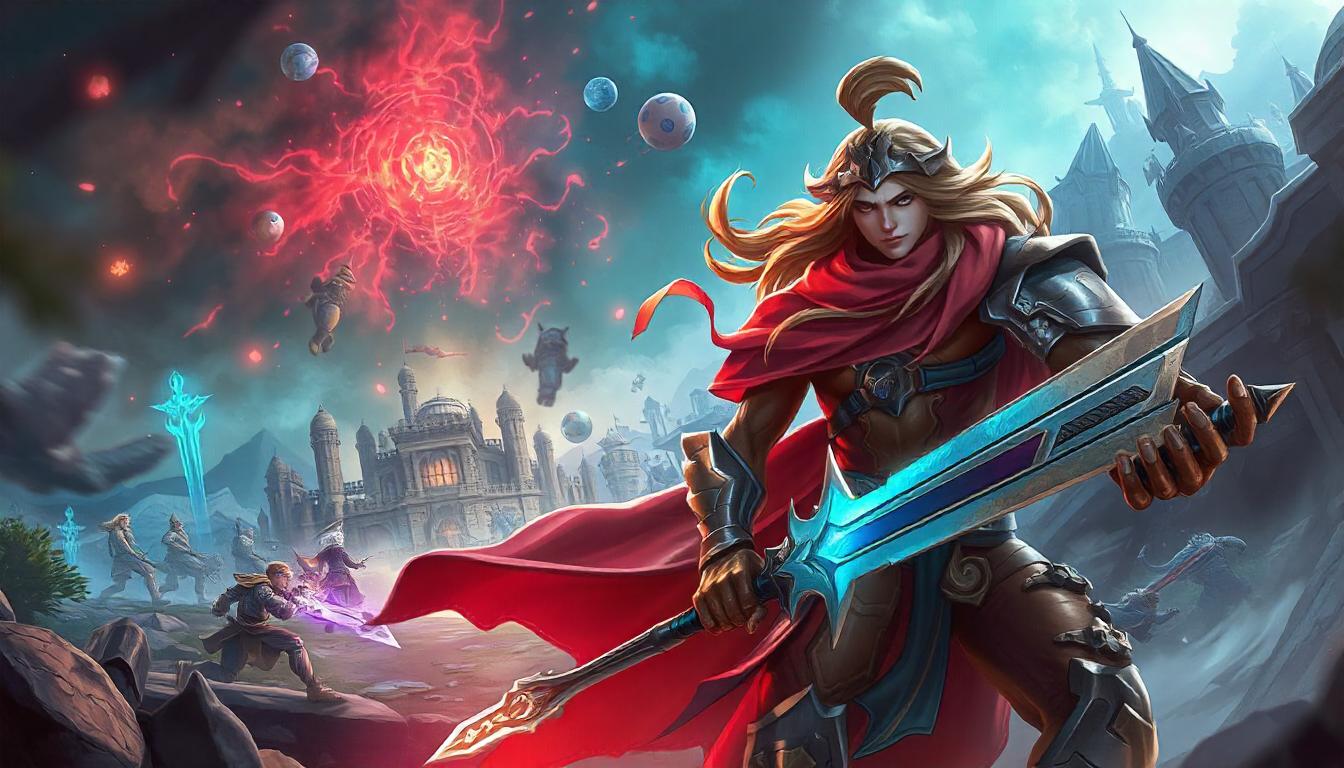League of Legends (LoL) is a free-to-play multiplayer online battle arena (MOBA) game developed and published by Riot Games. Released in 2009, it has grown into one of the most popular esports titles globally. Players control unique champions with special abilities, working in teams to destroy the enemy’s Nexus. The game features strategic gameplay, diverse champion rosters, and a competitive ranked system. With constant updates, global tournaments like the World Championship, and an expanding universe through spin-offs and media adaptations, League of Legends remains a dominant force in gaming.
Introduction
League of Legends (LoL) is a multiplayer online battle arena (MOBA) game developed by Riot Games. Since its release in 2009, it has become one of the most played and streamed games globally. Combining deep strategy, skill-based gameplay, and a vast universe, League of Legends attracts millions of players worldwide.
This guide provides an in-depth look at LoL, covering its core mechanics, champions, game modes, competitive scene, updates, and cultural impact.
1. Gameplay and Mechanics
1.1 Objectives of the Game
League of Legends pits two teams of five players against each other on a map called Summoner’s Rift. The main objective is to destroy the enemy’s Nexus, a core structure located in the opposing team’s base. Players must navigate lanes, jungle areas, and engage in team fights to secure victory.
1.2 Map and Roles
The main map, Summoner’s Rift, consists of three lanes:
- Top Lane: Usually occupied by tanky or bruiser champions.
- Mid Lane: Home to assassins and mages with high burst damage.
- Bot Lane: A duo lane featuring Attack Damage Carries (ADCs) and Support champions.
- Jungle: The area between lanes, controlled by the Jungler, who secures objectives and assists teammates.
1.3 Champions and Abilities
League features over 160 champions, each with unique abilities and playstyles. Champions belong to different classes, such as:
- Assassins (e.g., Zed, Katarina) – High burst damage and mobility.
- Mages (e.g., Ahri, Veigar) – Magic users with powerful spells.
- Tanks (e.g., Malphite, Leona) – Durable champions who absorb damage.
- Marksmen (e.g., Jinx, Ashe) – Ranged attackers dealing sustained damage.
- Supports (e.g., Thresh, Lulu) – Provide healing, shielding, and crowd control.
Each champion has four abilities (Q, W, E, R) and passive effects, making mastery of champions a key element of the game.
2. Game Modes
2.1 Summoner’s Rift (Ranked and Normal)
The primary competitive mode where teams play in standard 5v5 matches. Players earn LP (League Points) to climb through ranked tiers, from Iron to Challenger.
2.2 ARAM (All Random All Mid)
A casual mode where players receive random champions and battle on a single-lane map called Howling Abyss.
2.3 Teamfight Tactics (TFT)
A spin-off auto-battler mode where players build teams of champions in a turn-based format.
2.4 Rotating Game Modes
Occasionally, Riot Games introduces fun modes like URF (Ultra Rapid Fire) and One for All, which modify traditional gameplay rules.
3. The Competitive Esports Scene
3.1 Regional Leagues
League of Legends has a global esports ecosystem, featuring major leagues such as:
- LCK (Korea)
- LPL (China)
- LEC (Europe)
- LCS (North America)
Each region holds seasonal competitions, leading to international events.
3.2 World Championship (Worlds)
Every year, Riot hosts the League of Legends World Championship, where teams from around the world compete for millions in prize money and the Summoner’s Cup.
3.3 Mid-Season Invitational (MSI)
A mid-year international tournament featuring champions from regional leagues.
4. Champion Updates and Meta Changes
4.1 Patch System
Riot Games releases biweekly patches, balancing champions, items, and introducing new content.
4.2 Meta Evolution
The “meta” (most effective tactics available) shifts regularly based on patch updates. Some patches favor aggressive early-game champions, while others support late-game scaling champions.
4.3 New Champion Releases
New champions are introduced frequently, keeping the game fresh and expanding strategic possibilities.
5. Skins, Cosmetics, and Monetization
5.1 Skins and In-Game Purchases
League features hundreds of champion skins, categorized as:
- Basic Skins – Simple visual updates.
- Epic Skins – High-quality designs with new animations.
- Legendary Skins – Completely reworked character models and voice lines.
- Ultimate Skins – The most premium skins with evolving effects.
5.2 Events and Battle Passes
Riot frequently launches in-game events with exclusive rewards, missions, and limited-time skins.
5.3 Free-to-Play Model
League is free-to-play, with monetization through skins, emotes, battle passes, and in-game currency purchases.
6. Community and Cultural Impact
6.1 Streaming and Content Creation
League of Legends dominates platforms like Twitch and YouTube, with popular streamers and content creators producing educational, funny, and professional gameplay content.
6.2 Arcane – The Animated Series
In 2021, Riot released Arcane, a critically acclaimed Netflix series based on LoL’s universe. The show introduced characters like Jinx, Vi, and Jayce, expanding the game’s lore.
6.3 Music and Collaborations
Riot has produced original music, including K/DA (a virtual K-pop group), True Damage, and Pentakill, bringing LoL’s world to music fans.
6.4 Fan Art and Community Engagement
The League community creates fan art, memes, and fan theories, fueling ongoing engagement with the game’s lore and champions.
7. Conclusion
League of Legends continues to evolve, offering a dynamic and competitive gaming experience. With constant updates, a thriving esports scene, and a passionate global community, LoL remains a titan in the gaming industry. Whether you’re a casual player, an aspiring pro, or a lore enthusiast, League has something for everyone.
With its deep strategy, rich universe, and ever-changing gameplay, League of Legends is more than just a game—it’s a global phenomenon that continues to shape the world of gaming and esports.
